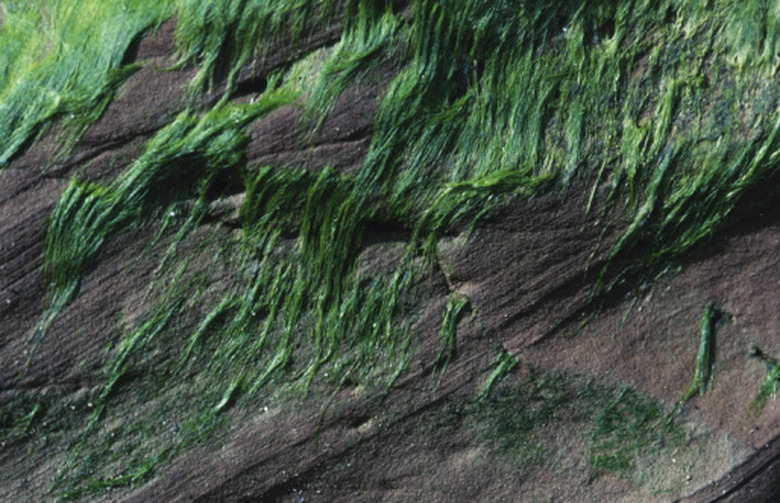In What Type Of Habitat Would You Find A Protist?
Protists were the first eukaryotes to evolve. The word protist originates from the Greek word "protos," meaning first. A eukaryote is a cell that contains a nucleus, and a protist is a single-celled eukaryote. These organisms represent a diverse group that can be difficult at times to classify because some protists are closely related to multicellular organisms, such as plants, animals and fungi. Protists are found in many habitats, particularly those containing water.
Basics
Basics
Protists are among the most complex living cells. While most are unicellular, there are some multicellular protists. They can live on their own; however, most thrive in colonies, depending on one another for survival. They are asexual and reproduce quickly through fragmentation or mitosis. Protists can be broken down into three groups: fungal-like protists that take in food through absorption; algae, which are plant-like protists that gain nutrients through photosynthesis; and protozoa, which are animal-like protists that ingest their food.
Aquatic Environments
Aquatic Environments
Protists make their homes in aquatic environments such as oceans, ponds, lakes and streams. Some attach themselves to rocks and reside on the bottom, while others float on the surface of the water, taking advantage of photosynthesis. Protists also live in aquariums and birdbaths. Aquatic environments are ideal for protists, which have cilia and flagella that allow them to move through the water. Being single-celled organisms, it is difficult for protists to move on land, although some make their homes in damp terrestrial areas, in the soil and beneath fallen leaves.
Symbiotic Relationships
Symbiotic Relationships
Protists form symbiotic relationships with other organisms in their habitat. Protists have been found living inside animals, within bodily fluids and tissues. For example, some protists are found in the intestinal tracts of termites. In many cases these relationships are mutual, meaning that the animal supports the life of the protist while also benefiting from its presence. However, in some instances the presence of the protist can be considered parasitic.
Jobs Within the Habitat
Jobs Within the Habitat
Within their aquatic habitats, protists have important jobs. Diatoms are protists with silica shells living in the ocean. When they die, these protists do not decay, but float to the bottom, making up the ocean floor. Diatoms are also responsible for 40 percent of the photosynthesis in the ocean and form the base of the food chain, feeding other protists and aquatic animals. Algae are another important protist in the ocean environment. Algae are responsible for the production of 30 percent to 50 percent of the Earth's oxygen.
Cite This Article
MLA
Maier, Casandra. "In What Type Of Habitat Would You Find A Protist?" sciencing.com, https://www.sciencing.com/type-habitat-would-protist-8489616/. 24 April 2017.
APA
Maier, Casandra. (2017, April 24). In What Type Of Habitat Would You Find A Protist?. sciencing.com. Retrieved from https://www.sciencing.com/type-habitat-would-protist-8489616/
Chicago
Maier, Casandra. In What Type Of Habitat Would You Find A Protist? last modified August 30, 2022. https://www.sciencing.com/type-habitat-would-protist-8489616/
